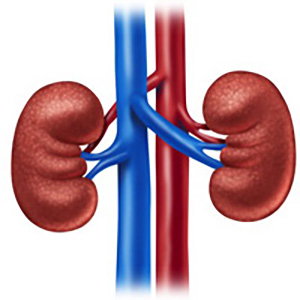Supine mini percutaneous nephrolithotomy in horseshoe kidney

Accepted: August 31, 2023
All claims expressed in this article are solely those of the authors and do not necessarily represent those of their affiliated organizations, or those of the publisher, the editors and the reviewers. Any product that may be evaluated in this article or claim that may be made by its manufacturer is not guaranteed or endorsed by the publisher.
Objective: The percutaneous nephrolithotomy (PCNL) in Horseshoe kidneys (HSK) is usually performed in the prone position, allowing entry through the upper pole and providing good access to the collecting system. However, in patients with normal kidney anatomy, the supine position is reliable and safe in most cases, but it is unknown whether the supine position is adequate in patients with HSK. The purpose of this study was to describe the results of PCNL in HSK in three different surgical institutions and to evaluate the impact of supine position during surgery, comparing pre-operative and post-operative data, complications, and stone status after surgery. Material and Methods: Between 2017 and 2022, a total of 10 patients underwent percutaneous renal surgery for stone disease in HSK. All patients were evaluated pre- and post- operatively with non-contrast CT. we evaluated patients (age and gender), stones characteristics (size, number, side, site and density ), and outcomes. The change in haemoglobin, hematocrit, creatinine and eGFr were assessed between the most recent preoperative period and the first postoperative day. Procedure success was defined as stone-free or presence of ≤4 mm fragments (Clinically Insignificant residual Fragments – CIrF). Complications were registered and classified according to Clavien-dindo Grading System, during the 30 - day postoperative period and Clavien scores ≥ 3 were considered as major complications. Statistical analysis was performed using “r 4.2.1” software, with a 5% significance level. we also compared pre-operative and post-operative data using “wilcoxon signedrank test”. Results: No statistical difference was observed between preoperative and post-operative renal function data. At one post operative day CT scan, an overall success rate of 100% was registered. 9/10 patients were completely free from urolithiasis (stone-free rate: 90%), while 1/10 patients had ≤4 mm residual stone fragments (CIrF rate: 10%). No cases of intraoperative complications were registered. Post-operative complications were reported in 1/10 patients. A patient developed urosepsis (defined as SIrS with clinical signs of bacterial infections involving urogenital organs - Clavien-dindo Grade II) after procedure, and was treated with intravenous antibiotic therapy successfully. Conclusions: This study shows that in patients with HSK mini- PCNL in supine position allows to achieve good stone free rate with a very low morbidity. According to our series, the described technique for PCNL in HSK should be an option. Nevertheless these results must be confirmed by further studies.
C. Türk, A. Neisius, A. Petrík, et al. European Association of Urology 2021, EAU Guidelines on Urolithiasi, 2021.
Li J, Gao L, Li Q, et al. Supine versus prone position for percutaneous nephrolithotripsy: A meta-analysis of randomized controlled trials. Int J Surg. 2019; 66:62-71. DOI: https://doi.org/10.1016/j.ijsu.2019.04.016
Osman Y, Harraz AM, El-Nahas AR, et al. Clinically insignificant residual fragments: an acceptable term in the computed tomography era? Urology. 2013; 81:723-726. DOI: https://doi.org/10.1016/j.urology.2013.01.011
Tefekli A, Ali Karadag M, Tepeler K, et al. Classification of percutaneous nephrolithotomy complications using the modified Clavien grading system: looking for a standard. Eur Urol. 2008; 53:184-190. DOI: https://doi.org/10.1016/j.eururo.2007.06.049
Schiappacasse G, Aguirre J, Soffia P, et al. CT findings of the main pathological conditions associated with horseshoe kidneys. Brit J Radiol. 2015; 88:20140456. DOI: https://doi.org/10.1259/bjr.20140456
Cereda A and Carey JC. The Trisomy 18 Syndrome. Orphanet Journal of Rare Diseases. 2012; 7:81. DOI: https://doi.org/10.1186/1750-1172-7-81
Ranke, Michael B, Saenger P. Turner's Syndrome. Lancet. 2001; 358:309-314. DOI: https://doi.org/10.1016/S0140-6736(01)05487-3
Bhattarai B, Kulkarni AH, Rao ST, Mairpadi A. Anesthetic consideration in downs syndrome--a review. Nepal Med Coll J. 2008; 10:199-203.
Natsis K, Piagkou M, Skotsimara A, et al. Horseshoe kidney: a review of anatomy and pathology. Surg Radiol Anat. 2014; 36:517-26. DOI: https://doi.org/10.1007/s00276-013-1229-7
Cook WA, Stephens FD. Fused kidneys: morphologic study and theory of embryogenesis. Birth Defects Orig Artic Ser. 1977; 13:327-40.
Glodny B, Petersen J, Hofmann KJ, et al. Kidney fusion anomalies revisited: clinical and radiological analysis of 209 cases of crossed fused ectopia and horseshoe kidney. BJU Int. 2009; 103:224-35. DOI: https://doi.org/10.1111/j.1464-410X.2008.07912.x
Pawar AS, Thongprayoon C, Cheungpasitporn W, et al. Incidence and characteristics of kidney stones in patients with horseshoe kidney: A systematic review and meta-analysis. Urol Ann. 2018; 10:87-93. DOI: https://doi.org/10.4103/UA.UA_76_17
Kartal I, Çakıcı MÇ, Selmi V, et al. Retrograde intrarenal surgery and percutaneous nephrolithotomy for the treatment of stones in horseshoe kidney; what are the advantages and disadvantages compared to each other? Cent European J Urol. 2019; 72:156-162.
Copyright (c) 2023 the Author(s)

This work is licensed under a Creative Commons Attribution-NonCommercial 4.0 International License.
PAGEPress has chosen to apply the Creative Commons Attribution NonCommercial 4.0 International License (CC BY-NC 4.0) to all manuscripts to be published.


 https://doi.org/10.4081/aiua.2023.11605
https://doi.org/10.4081/aiua.2023.11605



